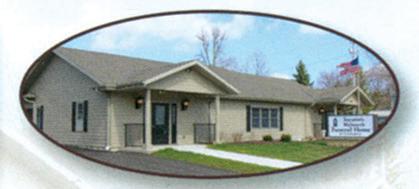LONG-TERM CARE CRISIS
COMPOUNDING PHARMACIES
COMBATING LONELINESS


COMPOUNDING PHARMACIES
COMBATING LONELINESS





Love, Mickelson Family
Laundry Facilities, Elevator,
• High Caregiver to Resident Ratio
• Exclusive MOSAIC Connections
Training; a required advanced dementia and engagement education system featuring the Virtual Dementia Tour
• Personalized Life Engagement Programming; featuring MOSAIC Therapies of Cognitive Stimulation, Creativity, Exercise, Community Participation and more!
• Medication Management
• Secured Entrance and Exits
• Incontinence Care
• Behavioral Expression Management
• Electric Charting System
• On-site Beautician, Dental Care, Podiatry, Physician*, Home Health Therapies and Hospice Care
• Unique MOSAIC Dreams Program!
Beloit | Clinton • 608-295-2764 • www.azuramemory.com
Call today to witness the Azura experience!




• Additional Storage at No Cost • Beautiful Community Room with Patio & Grilling Area • Small Pets Always Welcome!
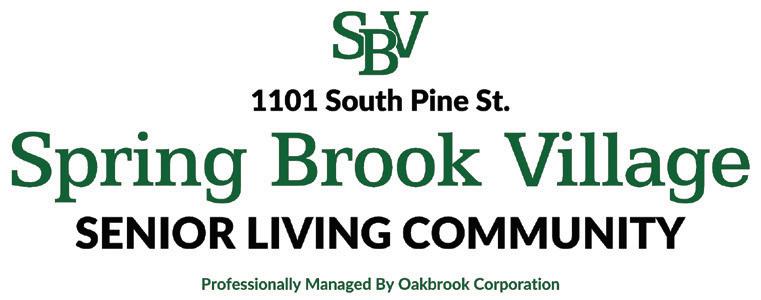






would offer temporary help, but more is needed
By Addie Costello WPR AND WISCONSIN WATCH
This story was produced and originally published by Wisconsin Watch, a nonprofit, nonpartisan newsroom, and was copublished with WPR and Isthmus, an independent, local news source based in Madison.
Barbara Hendricks needs at least 10 residents to pay out of pocket for her 22bed assisted living facility in Horicon, Wisconsin, to survive.
That’s because the other residents in the Dodge County home, Marvin’s Manor, rely solely on Medicaid, which Hendricks said pays her a little more than half the privatepay rate she charges – far below the cost of paying her workers.
“We will just make it,” Hendricks said. Squeezing by required Hendricks to close the other assisted living facility she ran in Waupun. The decision to close by August left the city with no assisted living providers for seniors who rely on government funding after exhausting their savings.
The facility sits empty after the closure forced 12 residents to find new homes, an increasingly difficult task for seniors already on Medicaid, the joint state and federal aid program to help low-income residents afford care.
“Going to see the residents now you can see they’re sad. They’re not home,” Hendricks said. “They’re just not home.”
Assisted living has grown in popularity across Wisconsin and the country, offering aging residents and people with disabilities more independence in less institutionalized settings than traditional nursing homes. But providers continue to struggle. Low state reimbursement rates through Medicaid have depressed provider revenue and worker pay.
That has led some facilities to oust residents who rely on government assistance or even close, limiting options for residents in need.
In 2023 alone, 148 Wisconsin assisted living communities closed voluntarily, according to the Wisconsin Department of
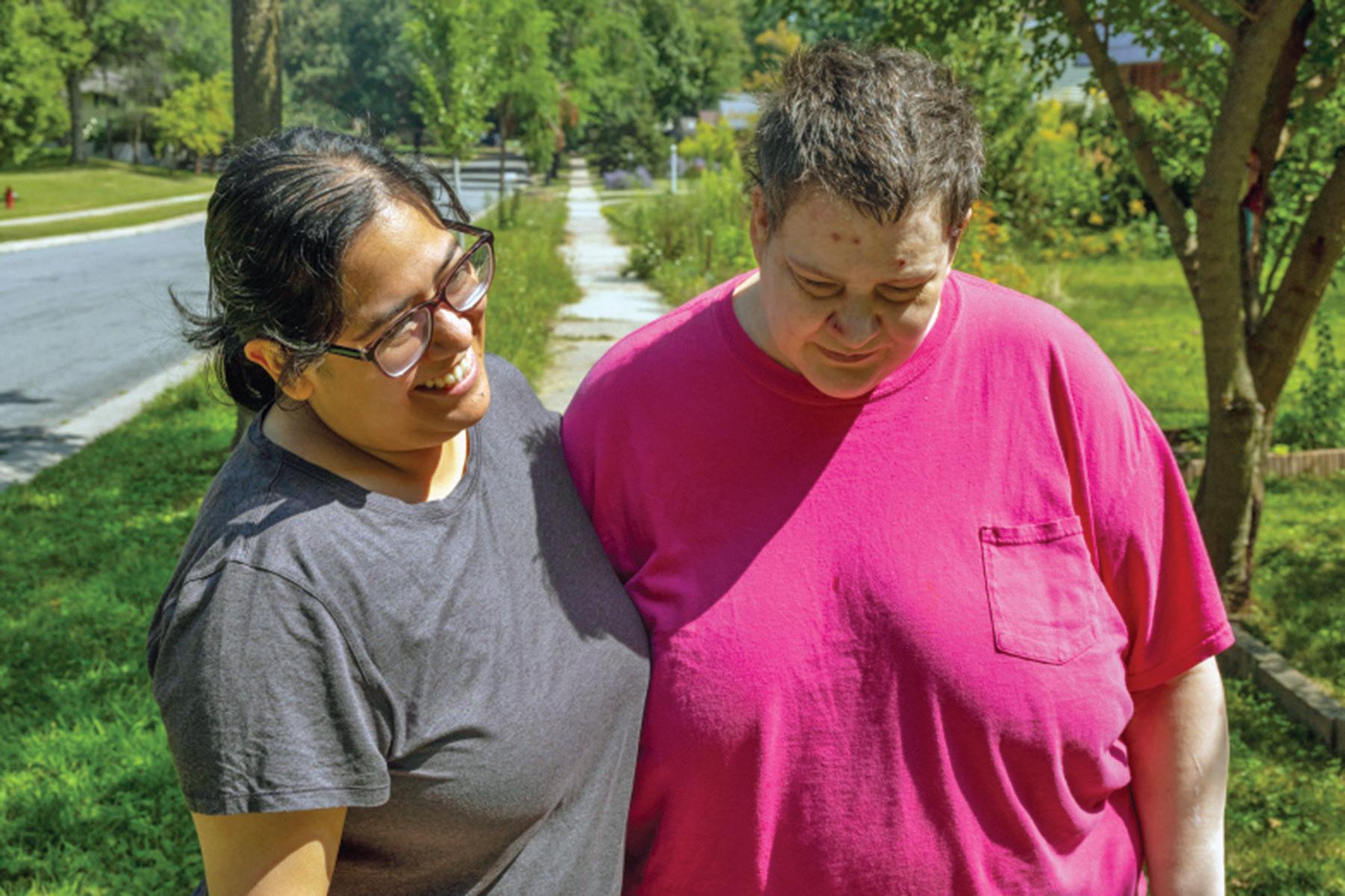
Health Services.
WPR and Wisconsin Watch obtained reports from 86 assisted living facilities that closed between 2020 and the first half of 2024, displacing more than 750 people. Each report asks providers to list their reasons for closure. About two-thirds blamed low Medicaid reimbursements or staffing shortages.
A Jefferson County provider cited “the historic and compounding gap between government long-term care provider reimbursement rates and the costs associated with providing care – in particular wages” as the biggest factor in its deficit.
The owner of a shuttered Green County facility wrote simply: “NO STAFF TO WORK.”
The state has incrementally boosted Medicaid reimbursement rates to cover assisted living and home health care, but not every provider benefited, and the rates continue to lag behind the cost of care.
Democratic Gov. Tony Evers in August directed the state health department to spend
more than $250 million in federal pandemic relief on assisted living. That was after the Republican-led Legislature’s budget writing committee blocked an earlier plan in an ongoing struggle over spending power.
Long-term care experts say Evers’
• CONTINUED ON PAGE 4
EDITOR IN CHIEF: Heather Ruenz
PAGE DESIGNER: Jen DeGroot
CREATIVE DIRECTOR: Heidi Schulz
ADVERTISING DIRECTOR: Vicki Vanderwerff
action will help, but only temporarily, and it still falls short of the full cost of care.
The emergency dollars must be spent by June 2025.
The Legislature will then decide whether to keep the funding in the state’s two-year budget. Republican leaders have previously called the rate increases too expensive.
“I don’t think (state officials) understand it,” Hendricks said. “They don’t see it. They don’t live it. We do.”
Wisconsin since 2020 has increased its average monthly Medicaid payments by roughly $790 per care recipient. But not every provider has seen recent raises.
Reimbursement rates for some of Hendricks’ residents haven’t budged in five years, said her daughter Tonya Maldonado, who handles billing for the company.
How is that possible? Managed care.
The state doesn’t reimburse providers directly. It pays managed care organizations, which negotiate rates with providers, aiming to limit costs. Wisconsin’s four MCOs later pay providers.
Managed care systems intend to provide higher value care to Medicaid recipients for less money, said Vincent Pohl, a senior researcher at Mathematica, a social policy research firm.
Managed care companies want to keep their costs low and maximize profits by passing as little Medicaid funding to providers as possible, Pohl said. They are navigating tough economics themselves, and historically low state reimbursement rates have left them little room to pass more money to providers, said Rene Eastman, vice president of financial and regulatory services at LeadingAge Wisconsin.
The state has little say over how much MCOs pay providers for assisted living.
“Under federal rules, there are very few ways in which the department can direct a managed care organization to spend its money,” said Wisconsin Medicaid Director Bill Hanna.
But the state can set minimum Medicaid reimbursement rates for MCOs to send providers, Hanna said. It has done so for nursing homes and other forms of medical care but assisted living facilities have long lacked such assurance.
Evers’ pandemic relief plan sets aside $258 million to increase Medicaid reimbursements. Unlike previous increases, it guarantees minimum payments to providers.
Nearly two-thirds of assisted living providers will see a more than 40% increase to their reimbursement rates, the Department of Health Services estimates. Three-fourths of supportive home care services would see a


more than 16% increase, showing that most providers are currently getting less from MCOs.
Hanna said some providers see the plan as a lifeline.
“I got phone calls the day of the announcement, from providers who called and said, ‘We were about to tell our board we needed to start closing procedures, but because of the minimum fee, we’re able to stay open,’” he said.
Susan Osteen, president and CEO of Diverse Options in Fond du Lac County, hasn’t yet felt relief.
“Whenever the state does something like this, we always just wait and see what’s coming next,” Osteen said. “And I don’t know what that’s going to mean for us.”
Diverse Options operates three fourbed assisted living homes for adults with developmental disabilities. The company closed an eight-bed facility in 2022 due to staffing issues.
Osteen says she’s waiting to see where the state sets minimum rates.
A reimbursement hike previously blocked by lawmakers would have required MCOs to reimburse providers at a $15.75 hourly wage for caregivers, up from the current $13.02 per hour. Britt Cudaback, an Evers spokesperson, said the governor’s latest proposal matched the previous plan.



The hike would still fall short of the $18 to $22 per hour wages Osteen pays employees.
Meanwhile, some providers worry the minimum reimbursement rates will become ceilings in practice – with no motivation for MCOs to pay more competitive rates, said Janet Zander, advocacy and public policy coordinator with the Greater Wisconsin Agency on Aging Resources, Inc.
“Even those that are lifted, will they be lifted high enough to truly change the course that we’re experiencing now?” Zander asked.
Rosa Landa bought her first assisted living home in 2019, starting with just two residents in the Madison facility. With particularly low Medicaid reimbursement rates at the time, she dipped into her own savings to keep the home running – even before she had additional staff to pay.
She considered closing Good Hand Care AFH before a slight Medicaid reimbursement hike allowed the home to survive and higher demands filled all four of its rooms.
Landa and her family take on most of the work alongside two employees. Their business turns a modest profit, but still-low Medicaid reimbursement rates offer little wiggle room.
She and her husband opened a new home in Monona at the start of this year. So far, the new home only has one resident, leaving three of its four rooms sitting empty. Although more residents plan to move into the home soon, Landa can’t help worrying.
“I cannot breathe basically, until I see everybody in the house,” said Landa, who hadn’t heard about Evers’ $258 million plan.
The state health department will hold a webinar for providers in a month or two, Hanna said, and it will implement new rates

by Oct. 1. All providers should start benefiting from the new rates by early 2025.
But the change could be short-lived.
Continuing the higher rates after June would cost the state and federal governments an estimated $516 million over two years, adding to Wisconsin’s roughly $30 billion biennial Medicaid budget. The Department of Health Services will request the increase in the next budget cycle.
While the department can set minimum rates on its own, the Legislature controls the funding to make it viable.
A member of the Republican-controlled Joint Committee on Finance blocked the minimum rate from implementation in April. Committee leaders say they worry about the annual cost of maintaining higher rates once pandemic relief runs out.

“Just nine months ago, the Joint Committee on Finance approved nearly half a billion dollars in new money to support the long-term care industry in our state, bringing our total new investment in the past three budgets to well over a billion dollars,” committee co-chair Rep. Mark Born, R-Beaver Dam, wrote in a statement.
The state allocated more than half of new long-term care investments to nursing homes rather than assisted living facilities or at-home care, according to a WPR and Wisconsin Watch analysis of the past three state budgets.
But more than 90% of Wisconsin Medicaid recipients received long-term care outside of nursing homes or other institutional settings, according to an analysis of 2020 data by KFF, a health policy research firm.
It’ll be hard on the providers if the Legislature does not extend the rate increases from Evers’ plan – especially for those who raise employee wages with the extra funding, Eastman of LeadingAge Wisconsin said.
“Once a caregiver wage is increased it’s extremely difficult and morally impossible to take that away,” Eastman said. “Providers need to be reassured that higher reimbursement will continue so that they can continue to pay their employees a fair and living wage.”
Jack Kelly of Wisconsin Watch contributed reporting.
The nonprofit Wisconsin Watch (WisconsinWatch.org) collaborates with WPR, PBS Wisconsin, other news media and the University of Wisconsin-Madison School of Journalism and Mass Communication.
All works created, published, posted or disseminated by Wisconsin Watch do not necessarily reflect the views or opinions of Southern Lakes Newspapers or any of its affiliates.
Men and women are vulnerable to many of the same diseases, but the prognosis for men is often worse than it is for women.
According to WebMD, out of the 15 leading causes of death, men lead women in just about all of them (the lone exception is Alzheimer’s disease).
Although it may not be possible to prevent every illness or condition, knowledge of the issues that affect men can encourage them to take a proactive approach to improve their health.
Cardiovascular disease is a major issue for men. The American Heart Association suggests that heart disease is likely to remain the world’s leading cause of death.
In the United States alone, heart disease is responsible for one in four deaths among men. Half of those individuals have no symptoms to alert them to problems. Health experts at Mercy Medical Center say smoking, obesity, diabetes, physical inactivity, and excessive alcohol consumption contribute to cardiovascular disease.
Men should routinely have their blood pressure and cholesterol levels checked and have frank conversations with doctors about heart disease risk.
Lung cancer is a significant concern for men. Lung cancer can spread early, usually before it grows large enough to cause symptoms or even show up on diagnostic testing.
WebMD says tobacco smoke causes 90 percent of all lung cancers. Fewer men now die of lung cancer thanks to falling smoking rates, but more work is needed. Men and women alike should realize the most effective way to avoid lung cancer is to never smoke.
More than half a billion people around the world have diabetes, offers the Cleveland Clinic. And the numbers keep growing. Left untreated, high blood sugar levels can lead to heart disease.
Lifestyle changes and medications can help people manage diabetes and decrease the risk of disease progression
and serious illness.
The prostate is only the size of a walnut however, it is vulnerable as men age. Apart from skin cancer, prostate cancer is the most common cancer in men. WebMD says close to 200,000 men will develop prostate cancer this year in the United States.
Although many prostate cancers are slow-growing, others can be aggressive, so abnormalities in health should always be discussed with doctors who can map out a plan and see if treatment is necessary.
According to Dr. Daniel Sullivan of the Cleveland Clinic, testicular cancer is the most common cancer in men between the ages 15 and 35.
Testicular cancer is very treatable if caught early. The most common sign of testicular cancer is a painless lump in the testicle.
Recognition of issues threatening their overall health can help men take steps to live longer and healthier.
(METRO CREATIVE)






Proper nutrition is critical to older adults’ overall vitality, providing energy, helping to control weight, and even preventing and managing some diseases.
Unfortunately, 10% of older people don’t eat enough, while one-third eat too much, according to HealthinAging.org, which is the Health in Aging Foundation’s online public education resource.
Such nutritional imbalances may be due to the range of common obstacles some people face as they age, including changing tastes, dental problems and difficulty accessing healthy foods.
“Charles,” a Cigna Healthcare Medicare Advantage (MA) customer, had several health issues when he was introduced to a nutrition program available through his MA plan. Through the program, he worked with a registered dietitian, started working out, and lost nearly 50 pounds. These changes fueled him to tackle additional health goals, including getting mental health support and assistance improving his sleep.
MA plans, like those offered by Cigna Healthcare, include “extra benefits” not available through Original Medicare. The Cigna Healthcare MA nutrition program is one of those extras, and it primarily supports older adults with a body mass index below 22 or above 40, those with chronic diseases like diabetes and kidney disease, and those with low fruit and vegetable intake. Through the program, registered dietitians provide customers with dietary advice that can help them improve their health.
“We offer information, education and resources that are different for everybody and not restrictive,” explained Robin Neal, RD, one of the program’s dietitians. “The goal is to provide skills and tools so individuals can self-manage their diet after the program ends.”
Neal said results often include weight loss and improved blood sugar readings, such as those Charles experienced.
Of course, program advice varies by individual and their unique nutritional needs, but some tips everyone can benefit from include the following:
Get your nutrients – according to the National Council on Aging, older adults should eat a variety of foods to get all the nutrients they need, including lean protein for muscle mass, as well as fruits and vegetables, whole grains and low-fat dairy. Choose foods with little to no added sugar, saturated fats and sodium. For an example of what a healthy plate looks like, visit

myplate.gov.
Stay hydrated – drink water often to aid digestion. Limit beverages with lots of added sugars or salt.
Visit the dentist – if you’re having trouble chewing, visit your dentist. They may be able to help. For instance, if you have ill-fitting dentures, chewing can be improved and more comfortable with a better fit. Additionally, choosing softer foods, such as canned fruit, soups or tuna, may help. Dental visits are a covered benefit in many Medicare Advantage plans.
Follow food safety guidelines – food not prepared properly can make you sick. Because those with weakened immune systems are vulnerable to foodborne illnesses, it’s especially important for older adults to follow food safety guidelines. If you have any doubt about a food’s safety, throw it out.
Limit salt – too much sodium can increase the risk of high blood pressure, heart attack and stroke. To stay heart healthy, ask your doctor for guidance on recommended daily sodium limits based on your health status and check food labels for sodium content. Cook more meals at home
using lower sodium ingredients and avoid processed foods. Flavor dishes with herbs and spices.
Seek assistance if needed – take advantage of MA plan benefits that can help you secure healthy foods, like transportation or grocery cards. Additionally, there are local and national programs to help those on limited incomes with nutritious food costs, including the Supplemental Nutrition Assistance Program (SNAP). To learn about assistance available in your area, visit cignacommunity.findhelp.com.
To find MA plans offered in your area, visit Medicare.gov. For information on Cigna Healthcare plans, visit CignaMedicareInformation.com.
“By devoting your time and attention to eating well, you’ll not only be able to maintain a healthy body weight, but you can also reduce your risk of chronic disease and maintain your overall vitality as you age,” said Neal.
“And, of course, if you have any questions about your health, you should always talk to your doctor.”
(STATEPOINT)
Home is where the heart is. That sentiment may be especially true for seniors who have spent decades living in their homes. A lot of hard work goes into home ownership, and seniors who have lived in the same space for a while undoubtedly have countless memories within the walls of their homes.
A lifetime of experiences in a home can make it hard to leave, but many seniors experience diminished mobility as they age. Mobility issues can make it hard for seniors to traverse their homes, but aging homeowners can make various renovations to make a home more accessible.
Revamp entryways and staircases
A recent study of 1,000 adults in the United Kingdom found that 28 percent of individuals aged 65 and older who don’t exercise regularly struggle with activities like walking up stairs. The study, commissioned by Total Fitness, also found that 14 percent of men and women over 65 who regularly engage in moderate exercise still find it challenging to climb up and down a flight of stairs.
Seniors facing similar challenges can install a ramp at their home’s entryway so
they can comfortably go in and out. Inside, a chair lift can ensure seniors are not struggling to move from one floor to another.
Raise the outlets throughout the home
They’re easily overlooked, but outlets, particularly those outside the kitchen, tend to be close to the floor. AARP notes that’s no accident, as outlets are generally placed at a height equal to the length of a hammer to save time with measuring when buildings are being constructed. Outlets close to the floor can be difficult for seniors with mobility issues to reach.
Relocating the outlets a little higher off the floor is not an expensive renovation, but it can make a home more accessible for seniors who have difficulty bending down or getting down on one knee.
Install doorknob extensions
Verywell Health notes that nearly half of all people aged 65 and older have arthritis or another rheumatic condition. Arthritis can make it difficult for seniors to grip and turn doorknobs.
Doorknob extensions can make it easier for seniors with arthritis to open the doors in their homes. Such extensions are roughly

five-inch levers that can be installed over an existing doorknob, making it easier to grab and pull down. Extensions save seniors the hassle of turning the knob, which some may find painful and almost impossible.
Renovate the bathroom
Bathroom renovation projects can be costly, but seniors with mobility issues should know that bathrooms can pose a particularly dangerous threat. The Centers for Disease Control and Prevention notes that roughly three million older adults are treated for fall injuries in emergency departments each year.
A recent analysis published in The Journals of Gerontology noted that 22 percent of in-home falls resulted in a change in the person’s walking ability.
Replacing a step-over shower with a zero-step alternative can make it easier for seniors with mobility issues to get in and out of the shower, thus reducing their risk for falls. Grab bars along shower walls and a chair inside the shower can make it easier to bathe and towel off safely.
Seniors with mobility issues can make their homes more accommodating through an assortment of simple, yet effective renovations.
(METRO CREATIVE)

La dolce vita, the sweet life, is an expression used to describe a life full of beauty, pleasure and the mundane. It means a life of music, love, good food and conversation! We are dedicated to helping people enjoy the good life through better hearing!
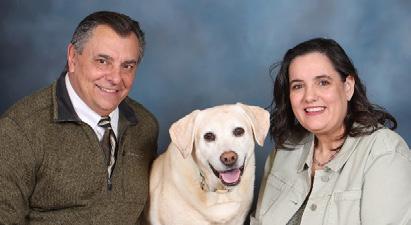
The Gilane Family is “HEAR” for you! Combined, we have over 30 years of experience in the hearing care industry. Jeff Gilane is our Hearing Instrument Specialist and co-owner, Cynthia Gilane is our CEO/co-owner and Repair/Cleaning Expert. Sadie is our CMO (Chief Mascot Officer). We are your Locally Owned & Independent Lifetime Hearing Partners! Call us

As we age, the risk of loneliness can increase due to various factors like retirement, the loss of loved ones, or health issues.
Loneliness not only affects emotional well-being but also has significant implications for physical health, potentially leading to conditions such as depression, cardiovascular disease, and cognitive decline. However, there are effective ways to combat loneliness and maintain a rich, fulfilling life.
Here are some strategies that seniors can adopt.
Stay active and engaged
• Join clubs and groups – participating in clubs and groups that align with your interests is a great way to meet new people and stay active. Whether it’s a book club, gardening group, or a local senior center, these social gatherings provide opportunities to build friendships and engage in meaningful activities.
• Volunteer – volunteering offers a sense of purpose and community connection. Many organizations, such as hospitals, schools, and non-profits, welcome senior volunteers. This not only helps others but also enriches your own life by fostering a sense of accomplishment and social interaction.
Leverage technology
• Social media and online communities – social media platforms and online communities can be valuable tools for staying in touch with family and friends. Platforms like Facebook, Instagram, and specialized senior forums allow for easy communication and sharing of experiences.
• Video calls – video calling apps like Zoom, Skype, and FaceTime provide a more personal way to connect with loved ones compared to phone calls or text messages. Seeing the faces of friends and family can significantly reduce feelings of isolation.
• Exercise classes – participating in exercise classes, whether in person or online, can improve both physical and mental health. Many communities offer senior-specific fitness programs such as yoga, tai chi, or water aerobics that also

provide social interaction.
• Walking groups – joining a walking group not only promotes physical health but also provides a regular opportunity to socialize. Many communities have walking clubs tailored for seniors, which can be a fun way to explore your local area and meet new people.
Cultivate new hobbies
• Learn something new – taking up a new hobby can be a great way to keep the mind active and meet people with similar interests. Consider activities like painting, knitting, playing an instrument, or learning a new language. Many community centers and online platforms offer classes specifically designed for seniors.
• Engage in creative arts – creative activities such as writing, drawing, or crafting can be therapeutic and a wonderful way to express yourself. These activities can also lead to joining groups or clubs where you can share your work and collaborate with others.
and build relationships
• Stay in touch with family and friends – regular communication with family and friends is crucial. Make it a habit to call, write letters, or visit when possible. Sharing your life and hearing about theirs can help maintain a strong emotional connection.
• Make new friends – don’t hesitate to make new friends. Attend community
events, take part in local activities, or simply strike up a conversation with neighbors. New friendships can bring fresh perspectives and joy into your life.
• Therapy and counseling – if feelings of loneliness persist, it may be helpful to speak with a therapist or counselor. Professional help can provide strategies to cope with loneliness and address any underlying issues such as depression or anxiety.
• Support groups – joining support groups can be beneficial, especially if you’re dealing with specific challenges like the loss of a loved one or chronic illness. Sharing experiences with others who are in similar situations can provide comfort and practical advice.
Loneliness in seniors is a significant concern, but it is not insurmountable. By staying active, leveraging technology, engaging in physical and creative activities, maintaining relationships, and seeking professional help when necessary, seniors can lead a socially rich and emotionally fulfilling life.
The key is to take proactive steps to connect with others and embrace opportunities for engagement and personal growth.
Information provided by Azura, a familyowned and Wisconsin-based premier provider of assisted living and memory care.
Loneliness in seniors is a significant concern, but it is not insurmountable. The key is to take proactive steps to connect with others and embrace opportunities for engagement and personal growth. One strategy is to leverage technology in online communities and social media as well as video calls.
NATIONAL COUNCIL ON AGING
Physical therapists (PTs) are experts in how the body moves. They identify and treat movement problems in people of all ages and abilities. They do this by providing hands-on care, education, and by prescribing specific exercises or activities. Most PTs have completed a three-year training program and have a doctorate in physical therapy (DPT). All physical therapists must be licensed by their state in order to practice.
Using the latest research, physical therapists design a treatment plan for each person’s specific needs, challenges, and goals. PTs help patients to better manage pain, and support recovery from injury. They also have the skills to educate and empower patients to prevent injury and manage or prevent chronic disease. These health professionals help you stay independent and do the things you want to do.
Nearly 80% of PTs practice in settings that typically treat older adults. They are trained to:
• Understand the normal changes in aging
• Recognize how recovering from an injury or managing a chronic disease might be a different process for older adults
• Integrate their knowledge of aging into an effective program designed for an older adult to successfully achieve their goals
Physical therapists perform comprehensive evaluations to understand a person’s mobility abilities. This may include assessing your ability to do activities important to you such as: strength and endurance, balance, mobility, coordination, flexibility, environment, and anything else specific to your goals.
A PT may also perform a screen of your cognition, vision, medications, mood, and any other health issues or concerns to identify if other health professionals should be involved in your plan of care.
After an evaluation is complete, the PT will design treatment plans specific to each person’s needs, challenges, and goals.
How does it help with balance?
Many falls are preventable. PTs are trained to identify the many reasons someone may experience a fall. They can work to identify your risk factors, along with a series of tests to assess your strength and balance and may also check your feet, including how your shoes fit.
Fall risk assessment also includes a review of medications, vision, and blood pressure. They will provide you with the

education you need to understand your risk and what you can do to address your risk factors.
Physical therapists are experts in identifying why someone is experiencing challenges with their balance. They can help determine if the balance problem is due to muscle weakness, issues with the inner ear, problems with your sensory system (knowing where your body is in space), poor reaction times, or other contributing factors.
How do I find and choose a PT?
Like other doctors, physical therapists often specialize in a specific practice area. Some of the recognized specialties include geriatrics, neurology, orthopedics, and women’s health. When you are looking for a PT, you can ask:
• If they are certified specialists, or if they have advanced training in an area like fall risk management or pain science
• If they see patients that look like you and have similar challenges
• What their goals with their patients are
You want to work with a PT who is vested in you achieving your own goals. It is also a good idea to ask what additional services they offer.
It is very common for physical therapists to accept traditional Medicare and Medicare Advantage patients, but you should always check they accept your insurance. Be sure to ask if there are co-pays and if they will submit claims on your behalf.
The easiest way to find a PT is to use this tool created by the American Physical Therapy Association – Find a PT. You can filter search results by location, practice focus, or specialization. If you are looking for a PT
who specializes in older adults, you can filter for geriatrics or fall prevention.
All physical therapists in Find a PT are members of the American Physical Therapy Association, but not all PTs are members of the APTA. If you are unable to locate a PT using this tool, then look for physical therapists and physical therapy clinics in your community.
Your first visit with a physical therapist will be very similar to your first visit with any other health care provider.
Consider writing this information down so you have it handy:
• Any symptoms you have been experiencing like pain, what makes it better or worse
• Any activities you had to stop doing or modify that are associated with this problem
• Key information about your history, even if it seems unrelated
Be sure to bring the following with you: comfortable clothes that you can easily move in, hearing aid or glasses if you wear them, any assistive devices you use regularly (walker or cane), a list of medications you are taking including over the counter medications and herbal supplements and any medical test results like x-rays or MRI that you had related to this problem.
Most importantly, bring your goals and hopes – and never think you are too old or too weak to do what you want to do. Be honest with your PT, make sure you are getting the therapy session you want, and be prepared to be amazed by what you can achieve.
For more information, visit the National Council on Aging at ncoa.org.
In 2023, banks reported more than $27 billion in suspicious activity related to elder scams. There are a couple of scam strategies to watch for that generally target the elderly.

Amid technology advances enabling scammers to commit fraud, elders and their loved ones need to stay informed.
Typically, elder scams involve the transfer of money to a stranger or imposter for a promised benefit or good.
In 2023, banks reported more than $27 billion in suspicious activity related to elder scams, according to the Financial Crimes Enforcement Network. Reports filed by the public to the Federal Bureau of Investigation indicated an average loss of more than $33,000 per case. And these numbers may be conservative, as elder fraud cases may be underreported.
One technology behind these staggering figures is artificial intelligence (AI). Advanced methods of masking one’s identity using AI make it difficult to detect fakes. Voice print – or voice clone – scamming is becoming more of an issue when it comes to impersonation fraud. Using voice clips from social media or by calling and having a brief conversation with someone, criminals can generate an imitation to be used as part of their ruse.
“Older adults are often easier prey for these types of fakes, because a recognized voice when applied to certain scam strategies is often enough to elicit action,” says Mark Kwapiszeski, head of Enterprise Fraud at PNC.
Most scams targeting elders generally follow one or two main strategies: 1) elicit strong feelings and apply a sense of urgency to get someone to act
quickly before thinking, and/or
2) entice someone with an offer that seems too good to be true, yet too alluring to pass up. Here are some of the more common types of elder scams:
Scams that apply a sense of urgency:
• Tech Support. Someone will claim they need to remotely access the victim’s computer to fix a software problem, then use that access to steal personal or financial information.
• Government imposter. The fraudster may tell the victim they owe a debt that must be paid immediately or face arrest, asset seizure or termination of benefits.
• Grandparent. An elaborate story is given by phone and sometimes involves a voice print of an actual grandchild, claiming a loved one is in trouble and needs money to be protected.
Scams that offer something too good to be true:
• Investment. The scammer makes claims of a high-return investment to trick the victim into giving them money, often asking to be paid in an unconventional way, like cryptocurrency, where there’s little to no chance of recovering the funds.
• Romance. The scammer develops a fake identity and creates the illusion of a romantic relationship to manipulate or steal from the victim.
• Lottery and sweepstakes. Scammers make contact by phone or mail to tell the victim they’ve won the lottery or a sweepstakes but claim the elder has to remit a processing fee before they can get their prize.
The most effective way of preventing fraud is to pause when being rushed and take time to verify the legitimacy of both the person making contact and their claims.
To reduce the odds of your voice being cloned, experts suggest exercising caution when speaking on the phone with strangers.
If someone unfamiliar contacts you, disconnect from the original communication channel, verify their identity, then attempt to make contact through a different channel. For instance, hang up the phone, get a number for the company, government agency or family member from a trusted source (such as a company’s official website) and use that to call back and verify.
When it comes to scammers that establish a relationship over time, verify legitimacy using third-party resources before investing.
Be leery of anyone asking for nontraditional payment forms, and when logic may be clouded by romantic feelings, confide in someone you trust for an objective opinion.
To learn more about cyber fraud, visit PNC Bank’s Security & Privacy Center for educational resources.
If you believe you or someone you love has been a victim of fraud, contact the Department of Justice Office for Victims of Crime’s National Elder Fraud Hotline website or call 1-833-FRAUD11. (STATEPOINT)
Healthy aging is a multifaceted process that involves an array of variables. Diet and exercise are two such variables, and each are intertwined. According to the National Institute on Aging, the amount of calories individuals over 60 need each day depends on their physical activity levels.
Though all adults should aspire to be physically active each day, some aging adults may experience mobility issues that make it hard to move around. But activity levels can serve as a measuring stick for daily calorie intake. The NIA notes that the more active men and women over 60 are, the more calories they will need to consume.

The NIA recommends that women over 60 who are not physically active consume 1,600 calories per day. Men over 60 who are not physically active are urged to consume between 2,000 and 2,200 calories each day.

What qualifies as moderate physical activity is best defined by an individual’s physician, who may recommend various exercises or activities based on each person’s condition.
Daily walks may qualify as moderate physical activity, but aging adults are urged to keep track of the length and intensity of such walks so they can work with their
physicians to determine how they might affect their daily caloric intake.
Women over 60 who engage in moderate physical activity each day are urged to consume 1,800 calories per day, while men in that category should consume between 2,200 and 2,400 calories.
Aging men and women can probably determine on their own if their lifestyle can be described as very physically active.
Women over 60 who qualify as very active should consume between 2,000 and 2,200 calories per day, while the NIA advises very active men to consume between 2,400 and 2,600 calories per day.
Of course, it’s important that men and women over 60 choose the right foods each day as well. The NIA advises against choosing foods that have a lot of sugar, saturated fat and sodium.
Fruits, vegetables and whole grains are examples of healthy foods that can help aging individuals reach recommended daily calorie intake without compromising their overall health. (METRO
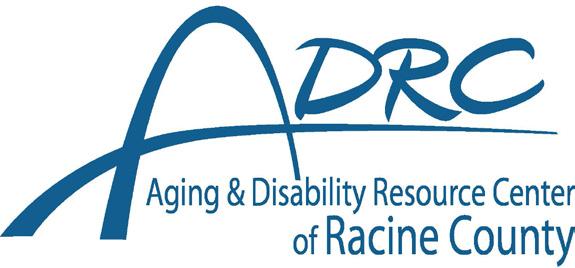



Compounded medications deliver therapy required for individuals to live healthier, happier lives in a form that can optimize their care. These medications can also play a vital role in addressing challenges related to FDA-approved prescription medication shortages.
Most consumers know how a traditional pharmacy works. Far fewer are aware of an alternative option: a compounding pharmacy.
Here’s everything you need to know about these specialized healthcare facilities, and how they have the potential to improve your wellness.
What is a compounding pharmacy?
A compounding pharmacy employs the art and science of creating personalized medications based on a patient’s specific requirements, ensuring an individualized approach to healthcare.
“The conventional, mass-produced,

one-size-fits-all approach to medication unfortunately does not work for all patients. Compounded medications however can help ensure patients get the therapies they need safely,” says Shaun Noorian, CEO and founder of Empower Pharmacy.
Empower is a compounding pharmacy that specializes in men’s health, women’s
health, dermatology, hormone replacement, weight management, IV therapy, longevity, sexual wellness, mental health and gender affirming care.
Why is this important? Compounded medications are crafted to address individual requirements, such as allergies to certain ingredients, dosage adjustments, or the need for alternative forms of medication (for example, needing a liquid instead of a pill form).
In short, compounded medications deliver therapy required for individuals to live healthier, happier lives in a form that can optimize their care. These medications can also play a vital role in addressing challenges related to FDA-approved prescription medication shortages.
How common are compound pharmacies? Compounding pharmacies make up 2% of the current pharmaceutical market, but that figure is growing as

With so many Medicare options available, selecting a plan can seem daunting. This year you may be wondering how news of Medicare drug price negotiations, economic uncertainties and other factors may impact your coverage in 2025.
Medicare is the government health insurance program for Americans 65 and older and others who qualify, providing hospital coverage (Part A) and physician visits (Part B) to beneficiaries.
Additionally, there are a variety of options that coordinate with original Medicare, such as Medicare Supplement plans and Prescription Drug Plans, or replace original Medicare with Medicare Advantage (MA) plans combined with Prescription Drug Plans.
During this year’s Medicare Annual
Enrollment Period (AEP), which takes place between Oct. 15-Dec. 7, 2024, here’s what Cigna Healthcare, which serves millions of Medicare customers nationwide, wants you to know:
If your current plan is working for you, you can likely keep it. However, it’s a good idea to review your plan every AEP, especially if you’ve experienced major life, health or financial changes.
Any changes to your current plan will be outlined in your Medicare plan’s Annual Notice of Change (ANOC) letter, which you can expect to receive in September.
There are a few key things to watch for when shopping for a plan. One of them is whether your favorite providers and specialists will be in-network. You should also review each plan’s formulary – that is, the list of drugs covered under the plan.
You’ll want to find a plan that will
cover your current medications and any you anticipate your doctor prescribing over the course of the year ahead.
Finally, carefully consider your total spend for your prescription drug plan coverage (i.e., premiums plus pharmacy costs) since the maximum out-of-pocket costs for drugs you utilize will be capped at $2,000 in 2025.
No matter what the economic outlook is, it’s wise to select a plan that provides great value. To that end, you may want to consider an MA plan, which offers quality and affordability.
MA plans cover everything original Medicare does, plus more; most also include dental, vision and hearing benefits, prescription drug coverage, and other extras like over-the-counter drugs, transportation to doctor’s visits and pharmacies, healthy grocery purchases, and fitness services.
• CONTINUED ON PAGE 15
This year’s Medicare Annual Enrollment Period takes place between Oct. 15 and Dec. 7. There are a variety of options that coordinate with original Medicare and while choosing the right plan may seem daunting, there are ways to make the process easier.
• CONTINUED FROM PAGE 13
more patients and providers grasp the benefits that compounded medicines provide.
How does this change the role of the pharmacist?
Pharmacists have always been an important part of patients’ care teams, dispensing medications and offering advice on side effects and dosing.
At a compounding pharmacy, that role also includes producing customized prescription drugs for patients, most often from raw ingredients.
Are compounding pharmacies within reach for regular patients? Some compounding pharmacies are working to prioritize access. Empower Pharmacy, for example, provides medications at an affordable cost in an effort to ensure everyone has access to the treatments they need.
And because the pharmacy operates online, patients with mobility and transportation issues are able to fill their prescriptions from the comfort of home.
Are there any safety issues to be aware of? Compounded medications are not FDA-approved, making it important for patients to stick to trustworthy pharmacies that use safe compounding practices. Be sure your pharmacy has Pharmacy Compounding Accreditation Board (PCAB) accreditation.
“We believe that understanding the nuances of compounding, its benefits, and its role during FDA-approved shortages helps equip patients to make informed decisions about their healthcare,” says Noorian.
To learn more, visit empowerpharmacy.com.
(STATEPOINT)
CONTINUED FROM PAGE 14
The plans are often available with $0 premiums, but you’ll also want to check on what your annual out-of-pocket costs could be based on your health status.
Before enrolling in a particular plan, make sure you understand its ins and outs. Call Medicare at 1-800-MEDICARE (1-800633-4227) 24/7; TTY users can call 1-877-486-2048. Or, visit the Medicare Plan Finder website at Medicare.gov/plan-compare.
For local assistance, refer to the State Health Insurance Assistance Program at www.shiptacenter.org. You can also contact individual Medicare plans, including Cigna Healthcare at CignaMedicareInformation.com.
“AEP is your opportunity to assess your budget and your health needs and find an option that will work for you and your lifestyle in 2025,” says Ryan Kocher, chief growth officer for Cigna Healthcare Medicare.



(STATEPOINT)

